In the brink of extinction - many freshwater fishTiistai 12.12.2023 klo 17.23 - Mikko Nikinmaa When I did my Ph.D. thesis 40-45 years ago, the topic: effects of temperature and hypoxia on respiration of rainbow trout, was hardly noticed by the general public. In 1976 we, biology students arranged a theme evening about the pollution of the Baltic Sea and invited media. Nobody came, and when I asked a newspaper reporter why that was the case, he answered that the topic had no general interest. I wish the situation were the same today: fish would not suffer from pollution, increased temperature and decreased oxygen level. Unfortunately that is wishful thinking. IUCN (International Union for the Conservation of Nature) has recently updated its Red List with very worrying information of fish, particularly freshwater fish. A quarter of the freshwater species is in immediate danger of extinction. The most important proximate cause is pollution, but toxicant effects cannot be separated from temperature increases and eutrophication, which causes oxygen lack. All of the previous problems increase parasite loads and cause fish diseases. In addition, overfishing and building of waterways, which has destroyed spawning sites or made it impossible to reach them, decreases fish populations. Below I give a couple of examples of how all of the above cause the disappearance of specific species. First, eels are critically endangered species, which are characterized by their catadromous way of life and long spawning migrations. They grow and reach maturity in freshwater. Their migration from sea to freshwater feeding sites is critically dependent on smell sensing, which is dramatically disturbed by pesticides and metals. Consequently, those types of pollution may be an important cause of declining eel populations. Second, burbot is a coldwater fish. It spawns in the middle of winter, and it is ice-fished in January-February to get the fish and its eggs for soup. Now that the temperature is increasing, burbot is already living at the high end of its temperature tolerance, and may soon become extinct. Another group of coldwater fish is salmon and its relatives. In addition, it requires clear water with high oxygen content. Since both an increase in temperature and eutrophication decrease the oxygen level, salmon and its relatives may become extinct. Lampreys have succeeded in temperate waters for 500 000 000 years. Many of the species live in sea as adults, but spawn in rivers. Because of building of waterways, e.g. hydroelectric power plants, their long saga may be coming to the end. Finally, aquarium hobby is very popular throughout the world. Many of the ornamental fish do not reproduce in captivity, and are thus fished wild. This has made many species endangered because of overfishing.
|
|
Kommentoi kirjoitusta. Avainsanat: environmental pollution, climate change, overfishing, eel, salmon, oxygen, hypoxia |
Russia and environmental protectionLauantai 20.5.2023 klo 15.21 - Mikko Nikinmaa Russia has now banned Greenpeace, because it demanded that Russia should take actions to combat environmental pollution, biodiversity loss and climate change. That actually says it all about the environmental policy of the present Russian government. Since Greenpeace dares to say that Russia should do something in terms of environmental protection, it is a hostile entity, and shall be banned. This attitude is typical for the Russian dictatorship. No-one is allowed to say anything that could suggest that Russia is not acting completely right. I suppose that all the talk about environmental pollution and climate change is just Western propaganda and lies. Russia is handling all environmental problems perfectly. To say anything else is hostility against Russia. It doesn’t matter that Greenpeace is also criticizing environmental actions in Europe and North America. That criticism is founded according to Russian government, since Western countries do not carry out environmental protection admirably as Russia does (according to Russian government). It does not matter that environmental standards of Russian industry are low. It is only Western lies that environmental actions are only done, if a company is acting against agreements it has undersigned. It doesn’t matter that Russia is doing virtually nothing to change from fossil fuel-dependent society to fossil fuel-free one. It doesn’t matter that after Western tankers stopped shipping Russian oil, the standard of tankers has decreased increasing the probability of oil spills in the Baltic Sea. I am afraid that only a revolution in Russia could change it to a more responsible country. Russian imperialism should end, maybe even the small ethnic areas, which now form Russian federation, should become sovereign nation states to enable fruitful dialogue and actions for environmental protection. |
|
Kommentoi kirjoitusta. Avainsanat: climate change, fossil fuels, environmental pollution, environmental actions |
Russia is a problem - also environmentallySunnuntai 19.3.2023 klo 15.41 - Mikko Nikinmaa Massive forest fires, melting permafrost with immense release of subterranean natural gas. No information about the environmental conditions in more than half of the arctic areas. The economy almost totally dependent on the exports of fossil fuels and mining products, which are produced with minimal concern about the environment in order to reduce production expenses. Shelling Ukrainian soil with ammunition; the compounds reaching the ground are known to be highly toxic. That, in short, is Russia today. We have only read the news about the war Russia has started, but for the world the Russian – or at least Putin government’s – attitude to environmental questions may be even more detrimental. Whereas it is generally accepted that climate change is causing massive devastation of habitable areas, sinking coastal cities and island countries, Putin’s government appears to clap hands, as increasing temperatures will probably enable commercial shipping in the Arctic Ocean North of Siberia through the Northeastern Passage. In the age of Soviet Union, terrible environmental disasters happened without any information about them in the Western world. For example, hundreds of thousands people died or were relocated when a nuclear arms storage site blew up. Chemical weapons were dumped in sea bottom as unknown sites. Western scientists had no way of checking what happens, because they had no contact with Russian scientists. The situation today is definitely not better, and maybe even worse, than at the time of Soviet Union. Putin’s Russia is closed like North Korea, virtually all the intellectuals which could alert of the existence of environmental problems have either been forced to emigrate or are in prison, and the government is anti-environmental. In view of this, the change of Russian government is needed in addition to stopping the war also for enabling sustainable life on the Earth. |
|
Kommentoi kirjoitusta. Avainsanat: sustainable life, climate change, environmental pollution, chemical weapons, arctic |
Physiological studies should be in the centre of climate change biologyTiistai 12.4.2022 klo 15.49 - Mikko Nikinmaa Climate change, and other environmental changes, affect the functions of organisms. The changes in populations and ecosystems follow these functional changes. If the functions of some organisms are not disturbed, the environmental change does not affect the ecosystem, if immigration and emigration can be accounted for. These simple facts indicate that functional studies, i.e., physiology, should be in the centre of environmental biology. Indeed, a stone could have exactly the same molecules as an organism, but without functions it would still be a stone. However, physiological studies are marginalized in climate change research and environmental biology – there are less than 1/10th of published physiological articles as compared to ecological articles within environmental biology. Furthermore, studies on animals account for less than 1/3rd of the physiological studies. In short, one carries out extensive ecological surveys and population genetic studies and observes that something has happened. This is the major problem with the research, it shows what has already occurred, but fails to evaluate why and how. With climate change research it is obvious that temperature increase plays a role, but only physiological studies can clarify, what the affected pathways are. Also, physiological investigations can answer in real time, if a disturbance is adequate to cause a perturbation in populations and ecosystems. Climate change research as well as other environmental biology should be predictive. This requires that physiology becomes a central, not a marginal discipline. Studies require intensive, time-demanding work, which is often technically quite demanding. Because of this, the number of scientists working on physiological questions should be drastically increased. Only this makes it possible to turn environmental and climate change biology to predictive science, which is required to combat environmental problems. |
|
Kommentoi kirjoitusta. Avainsanat: ecophysiology, ecology, environmental pollution, temperature |
Carbon taxes first, then environmental taxesTorstai 15.7.2021 klo 19.23 - Mikko Nikinmaa Both European Union and USA are planning to introduce carbon taxes on imports from third countries with more lenient standards in coal use in production. Since these two areas are the most important users of, e.g., steel, which is among the products that will be taxed for coal use, also production in third countries will certainly soon fulfill US and European standards to avoid taxation. This is a first step, which is hopefully followed by taxing all imports to Europe, which do not follow European environmental standards. Such measures will also affect companies having headquarters in Europe, as a lot of production has been relocated to areas with less strict environmental standards and lower wages. Such a change would be beneficial both to the third countries, as the environmental impacts of factories remaining there would be markedly reduced, and to the European countries, as some production would certainly return Europe because the costs in the “cheap countries” would increase towards European costs. |
|
Kommentoi kirjoitusta. Avainsanat: climate change, environmental pollution, environmental economics |
Environmental effects are complex; that is the problemTorstai 15.10.2020 klo 14.19 - Mikko Nikinmaa In any natural environment all animals, here I am focusing on fish, experience changes in temperature, parasite infections etc. On top of that become all the anthropogenic contaminants, metals, pesticides, flame retardants, pharmaceuticals, personal care products and so on. The complex cocktail can affect organisms directly and indirectly, and a change in any variable can affect the growth, health and survival of them. Because it is very difficult to study, how the environmental heterogeneity and its changes affect animals, most studies use a defined set of abiotic conditions and one pollutant. While this gives much valuable information, it should be remembered that for example a change in temperature, oxygen level, age of animal, salinity of water and the presence of other contaminants can influence the observed result. Occasionally, one gets the surprising finding that what we think as a pollutant and thus expect a negative effect actually increases the tolerance to an environmental change. For example, when we studied the effects of oil pollution on the thermal tolerance of juvenile fish (rainbow trout and European sea bass), we observed that the oil-exposed fish, if anything, tolerated high temperature better than control specimens (Anttila et al 2017, Environ Sci Pollut Res DOI 10.1007/s11356-017-9609-x). Recently, Petitjean et al (Science of The Total Environment Volume 742, 10 November 2020, 140657) have studied gudgeons in six French rivers, and observed clear interactions between the metal loads and temperatures the fish experience: an increase of metal load at high temperature reduces growth. Naturally, this survey conducted in natural environment cannot differentiate between direct and indirect effects of metals. It remains as a possibility that, e.g., the prey organisms of the fish are affected initially, whereby their availability decreases, decreasing the growth of fish. Here I have focused on temperature, because we are currently undergoing a giant-scale natural event, climate change. It would be much simpler to evaluate, how temperature increase as such affects living functions, than take into account how temperature change affects responses to the mixture of environmental contaminants. The temperature effects can be completely opposite for different contaminants. |
|
Kommentoi kirjoitusta. Avainsanat: climate change, environmental pollution, toxicant, cocktail effects, fish, temperature |
Physiological studies add a predictive component to modelling fish stocksPerjantai 3.7.2020 klo 18.00 - Mikko Nikinmaa Mirella Kanerva, Kristiina Vuori and us others have recently published a study about the fitness of salmon during their feeding migration in different parts of the Baltic Sea (Kanerva et al. Environmentally driven changes in Baltic salmon oxidative status during marine migration, Science of the Total Environment, in press, https://doi.org/10.1016/j.scitotenv.2020.140259). The study is The point about physiological measurements being able to predict changes in fitness and recruitment is revolutionary for fisheries biology. This is because earlier one has based all the models for stock estimations on retrospective observations on catches and spawning success. The findings of our study indicate that physiological expertise can add a predictive component to recruitment models. Our results also indicate, which parts of the Baltic Sea are most contaminated affecting the oxidative status of salmon. It is no surprise that effects are observed in the Gulf of Finland. However, these findings show that similar parameters could be used elsewhere to evaluate, if environmental contamination is serious enough to affect preferred fisheries species. Again, this adds a predictive component to earlier estimations based on retrospective data. Hitherto, fish physiology has remained a small field, but our results indicate that it could play a major role in modelling fish stocks, because it adds a predictive component to models and thereby gives possibilities for more rapid fisheries decisions than are currently possible. |
|
Kommentoi kirjoitusta. Avainsanat: fisheries biology, stock estimation, environmental pollution, oxidative stress |
World Seas are in peril: Hypoxia in Baltic Sea as an examplePerjantai 5.6.2020 klo 18.40 - Mikko Nikinmaa Human activities have affected world seas in various ways. A three-volume book on environmental evaluation of world seas has just been published by Elsevier (World Seas: an Environmental Evaluation). In two volumes it evaluates the environmental statuses of different sea areas and in one volume the major environmental problems affecting marine environments. The book’s aim is both to evaluate the present statu There have always been virtually anoxic bottom areas in the Baltic Sea, but they have increased markedly because of human actions. For example, the area with low oxygen (less than 2 mg/l) has increased tenfold from preindustrial times. The main reason for hypoxic/anoxic sea bottoms is that for about 50 years paper and pulp mill industry’s wastewater was entered the sea uncleaned. The biological oxygen consumption of the waste is approximately the same as that of 100 million people’s waste. Since the waste of tens of millions of people also entered the sea without treatment, the sea bottom now contains so much organic material and nutrients that even without any further wastewater or fertilizer discharges, the Baltic Sea would remain eutrophicated and have large hypoxic areas for tens of years. Hypoxia is caused by the consumption of oxygen by organisms or organic material, if it exceeds the diffusion of oxygen from atmosphere and its transport from oxygen-rich waters. In the Baltic Sea the water is stratified, and the high-temperature, low- salinity water which is oxygen-rich does not circulate with the dense oxygen-poor bottom water. The bottoms get oxygenated water only, when pulses of oceanic oxygen-rich waters displace the bottom areas. When this happens, the low-oxygen water, which has high nutrient content, will be transported to lower depths and to Gulf of Finland and also in small amount to Gulf of Bothnia. Because large amounts of phosphorus and nitrogen are liberated, primary production increases, and generation of hypoxia occurs in new areas. The increase of temperature causes increased oxygen consumption of all poikilothermic animals. Thus, climate change increases the likelihood of hypoxic periods. Also, if the predictions of increased rainfall during winter remain accurate, the phopshorus and nitrogen discharges during natural river flow to the Baltic increase markedly. Although eutrophication is usually linked only to increased plant, algal and cyanobacterial growth, the end result is always hypoxia. In shallow areas eutrophication leads to intermittent hypoxia. During the day, when there is enough light for photosynthesis, green plants and algae liberate oxygen, and the water often becomes hyperoxic. At night plants, algae, bacteria and animals all only consume oygen, rendering water hypoxic. The oxygen consumption by animals always consumes oxygen, but probably the most important reason for hypoxia is the oxygen consumption of microbes, which eat up all the dead plants, algae, cyanobacteria and animals entering the bottom. There is a group of bacteria which forms bacterial mats to bottoms with very low oxygen. If one considers communities, hypoxia generally decreases diversity and changes species composition. As an example, at group level, fish disappear first, and are replaced by jellyfish. Among macrofauna, polychaetes survive at lowest oxygen level. With lowering of oxygen level, microfauna and microbes replace macrofauna. Hypoxia reduces the growth of animals and as a consequence fish catches are reduced. Additionally, hypoxia-tolerant species are usually of reduced commercial value. Thus, the Baltic Sea fisheries are markedly suffering from the spreading of hypoxic areas.
|
|
Kommentoi kirjoitusta. Avainsanat: climate change, environmental pollution, eutrophication |
Populistic nationalism has failed miserably, profit-greedy globalism is dead: It is time for One Earth thinkingMaanantai 23.3.2020 klo 12.17 - Mikko Nikinmaa The populistic nationalism has completely failed in all the major problems that humankind has faced during recent years. Despite this it is said that internationalism is having problems, not the populistic nationalism. The populists have utterly failed in: 1. The immigration/refugee question. The populistic nationalism wants no immigration, as because of it resources must be used to supporting refugees instead of our own poor, sick, jobless and old people. Further, the immigrants are criminals, rapists etc – they just plan evil things all the time. The populist wants the immigrant problem to be solved in the immigrants’ home countries, but is against giving any money to foreign aid, since it would better be used in the populist’s home country. In an ideal world, immigration would not be a problem, because everyone would be happy to stay where they live. The problem is the huge contrast with, e.g., rich Europe and poor Africa: when 25 world’s richest people have approximately the same wealth as 25 % of world’s population together, it is no wonder that poor Africans will want to migrate to rich Europe. The populist denounces such economic immigration, but in that case also the emigration of Europeans to America and Australia, the exodus of Finns to Sweden etc should be denounced, in most of those cases people were not under death threat but wanted a better life. Now the populist does not want that to be possible for other people. Besides, many countries in Europe are suffering from so low birth rate that new people are needed. Because of the hostile attitude of populist nationalists, the integration of immigrants to western societies is quite difficult, and actually generates the breeding ground for different terrorist movements, violence and crime. The poor integration has persisted a long time, although even the populist was cheering for France in soccer world cup. This despite the fact that almost all players in French team were either themselves, or descendants of, those unwelcome immigrants. It must be acknowledged that one cannot accept the gender inequality, which is unfortunately very common, and the immigrant needs to accept the values of the society to which one is integrating. However, I am certain that if the immigrant feels welcome, and can fit within the working life, goo integration is more likely than in the hostile atmosphere created by the populistic nationalists. 2. Climate change and other environmental problems As a starting point one must state that one cannot prevent any environmental contaminant or climate problem to cross national borders. Thus, a nationalistic 3. Combatting coronavirus crisis. The spreading of coronavirus clearly shows that today it is impossible to keep any disease within one place. Yet, all the nations have reacted to the situation by closing national borders. This fits well with the populistic nationalist thinking, but is probably not the best way to contain the disease. While it is clear that closing certain areas would have been an important component of action in any case, the most appropriate areal closures would probably not have followed national boundaries. Further, it would have been much more cost-effective, if uniform testing was done everywhere, and if, e.g. European health personnel could have been moved according to needs. Also, the materials needed would have been sent where they are required, not stored within a nation in case that they are needed there later. It is further quite important to remember that nationalism is only about 150 years old. What was Italy 200 years ago – or Germany – a collection of city states. Since populistic nationalism also fails in the most important problems that mankind has recently faced, and only appears to create hate, discrimination, inequality and always blames everyone else without even trying to create constructive solutions, isn’t it time to cast that ugly parasite from our midst so that we can try to generate a world, where everyone has a place. Another ugly parasite is profit-greedy globalism. It has nothing to do with thinking globally. Its purpose is only to minimize expenses and maximize profits, and to avoid paying taxes of the maximized profits. The expenses are minimized on the cost of people and environment. Partly the costs are minimized by transferring production to cheap-labour countries, partly by producing materials without virtually any prevention of pollution. This way it is possible to generate profits and pay virtually no tax. I do not think it is fair that taxpayer may have to pay more than 40 % of his income as tax, but a big, successful company 0.1 %. The coronavirus crisis has now shown that this way of production is not possible in crisis situations. The supply chains have become too long, and since no stores are maintained in order to cut production costs, a final product can be 95 % ready, but cannot be finalized, because the remaining components cannot be produced, e.g. as a result of epidemy-induced breakdowns in production. Further, to save costs, the production of primary components/raw material may in profit-greedy globalism occur in one or two places in the world. If these places encounter any difficulties in production, then the final product cannot be generated. Both the populistic nationalism and profit-greedy globalism can be combatted, if one works as united world. The One Earth-movement should work to diminish inequality – the 25 richest people in the world would hardly notice, if their wealth were halved, and used to improve the living conditions of the poor. The environmental standards of production would be brought to European level, making the environment near African and Asian places of production much cleaner than today. Some of the production would be transferred back to European countries to shorten supply chains. Rich countries would reduce their energy and resource consumption which could be correspondingly increased in developing countries, which in return decrease their population growth. These changes can make the future sustainable to the world. However, it cannot be done with nationalistic decisions, but requires united world. |
|
Kommentoi kirjoitusta. Avainsanat: climate change, immigration, environmental pollution, inequality |
Functional changes are at the heart of encironmental biologyMaanantai 2.3.2020 klo 15.21 - Mikko Nikinmaa Environmental changes and pollution will only have an ecological effect, if they affect the function of some organisms in the ecosystem. Consequently, any environmental effect must be primarily functional, i.e. physiological. Toxicology is studying functional disturbances. On the basis of the above three lines, environmental (and also evolutionary) biology must be based on functional studies and explanations. In view of this, it is very inappropriate that environmental physiology remains a minor discipline in enviro In fact, function (i.e. physiology) is what makes a difference between a stone and organism. A stone could have exactly the same molecules as an animal, but without functions (physiology) it would still be a stone. |
|
Kommentoi kirjoitusta. Avainsanat: toxicology, environmental pollution, physiology |
Combatting Climate Change requires Environmental Globalism - thinking nationalistically or regionally is not enough to tackle most environmental problemsKeskiviikko 29.1.2020 klo 18.14 - Mikko Nikinmaa Nationalistic movements have gained ground during the recent past – Brexit, “America First” as prime examples. This is a sorry situation, because virtually all environmental problems are global. You can find a pollutant that originates from a factory in New York in a whale caught off the coast of Iceland. The foreign molecules are found in the Antarctic ice. The clothing we wear in European countries causes pesticide pollution, dye pollution, and decreased water availability throughout the cotton-producing countries. The nationalistically thinking circles always forget this, and say that “we are doing our share of combatting environmental problems.” To be able to say this, they should not use any t-shirts which use cotton grown in India and made in a factory in Bangla Desh. In buying and using these clothes the people are outsourcing the environmental pollution. If the nationalistic circles were actually thinking of their responsibility to the environment, they would pay for the expenses needed for proper water treatment in factories producing the clothes or their dyeing units. The global nature of environmental problems is clearest in combatting climate change. For example in Finland the nationalistic circles say that any industrial production in Finland is actually an action against climate change because of the strict environmental standards required here. This is the major point of environmental globalism. The same high environmental standards should be required everywhere on the globe, and the buyers of the products should pay for the improvements of environmental standards. Otherwise the buyers of the products are taking a free ride at the expense of the environment. Naturally it is not the environment we see every day, but the pollutants can later affect our everyday life. |
|
Kommentoi kirjoitusta. Avainsanat: environmental pollution, energy production, carbon footprint |
One Earth - Multidisciplinary Journals Emphasize the Earth's LimitsMaanantai 4.11.2019 klo 18.13 - Mikko Nikinmaa It is increasingly becoming apparent that the Earth has limits, as warned by scientists already in the 1970’s. The Club of Rome gave out the report Limits to Growth in 1974. Even before that the worries about the impact of increasing human population had been expressed (Paul R. Ehrlich, Population Bomb, 1968). However, marked media attention of the limits of the Earth has first been gained in the last couple of years because of climate change. The scientific world is now having new multidisciplinary journals. Cell Press (Elsevier) has started the journal One Earth, which in the editorial of inaugural issue says the following: “Climate change is not the only grand challenge we face. Springer-Nature has plans of starting a similar journal. Common to the new initiatives is that they see the need to combine humanistic, social and economic studies to what has earlier only been the mandate of environmental scientists. There is, indeed, a huge need for this, as the outset of economic theories and politics is continuation of growth. To change the outset to sustainability in the world with limits is needed, if we want to have a peaceful and orderly change to sustainable life. All too often one hears that “there are many opinions about climate change”, even though virtually all scientists studying climate-related phenomena agree on the topic. The different opinions are often those of people, who are focussing on one question they are familiar with, without noticing that the uncertainties caused by the phenomenon have been taken into account in the climate research. What is really worrying is that many of the problems have been known by fossil fuel industry for decades, but have been hidden in order to make big profits. Regardless, even if there were no climate change, the planet has limits, and the other challenges mentioned above remain. What has long remained within the circles of environmental scientists, should now be discussed and implemented in economic theories and politics. Hopefully the multidisciplinary journals will be read by humanistic, social and economic scientists, and politicians. There are still possibilities to change attitudes from growth to sustainability, but it cannot be done without political and economic leaders. |
|
Kommentoi kirjoitusta. Avainsanat: climate change, environmental pollution, sustainabbility, growth |
Overuse of the Earth is the Problem: Climate Change is just a SymptomPerjantai 1.11.2019 klo 18.38 - Mikko Nikinmaa Climate change is a question that has filled the media because of its potential effects on all aspects of life on the Earth. In the coverage of climate change, it has become THE PROBLEM. If we can solve it, life can continue with small disturbances. In view of this, different technological solutions to combat carbon dioxide increase have been offered. Mainly they concentrate on stopping the use of fossil fuels, changing the food preferences, removing carbon dioxide from the air and stopping overconsumption. The good ne The bad news is that even if the presently gravest symptom of Earth’s overuse, the climate change, can be stopped as a result of technological advancements, that does not stop the real problem: the overuse of Earth. There are two major components of this, population growth and consumption growth. Population growth demands more food production, and the increasing population in the presently poor areas will want to improve their living standards closer to, e.g., Europe. However, the food production with present agricultural methods has decreased the fertile soil by 50-70 %. Also, the present type of food production requires insecticides, herbicides and other pesticides, and artificial fertilizers. Already with the present population the pesticide use causes decrease of beneficial insect populations, which are required for the growth of berries, fruits and many oil-producing plants. So one would need to revert to environmentally friendly agricultural production. The problem is that consequently the production will decrease and will be unable to feed the presently increasing population. Because the fertility of land decreases, also new areas need to be taken to agriculture. This is difficult, since most of arable land is already in use. The increasing population also needs more space, and consequently habitation takes agricultural land and forest. As a result biodiversity decreases. With regard to consumption, it is difficult to decrease environmental pollution even if recycling and water treatment technologies are effective. There are always people, who do not follow good practises, and developing areas do not see the treatment of wastes and water purification as priorities. Consequently, environmental pollution continues to increase throughout the world. Both aquatic and terrestrial organisms will be affected. Thus, one can say that even if there were no climate change, other drastic symptoms of Earth’s overuse would be in the news. The basic problem is that limitless growth is the basis of economy in a planet which clearly has limits. |
|
Kommentoi kirjoitusta. Avainsanat: biodiversity, environmental pollution, population growth, agriculture |
Nobel Prize for Oxygen Sensing and Hypoxia: the Environmental Relevance of PhenomenaTiistai 8.10.2019 klo 9.37 - Mikko Nikinmaa One of the most conspicuous changes that occur in the aquatic environment is the increasing occurrence of hypoxic areas. The Nobel Prize in Physiology and Medicine is this year given to three scientists, Kaelin, Ratcliffe and Semenza, who have studied and discovered the mechanism of how oxygen deficiency controls gene expression in man. Compared to air-breathers, fish and other aquatic animals must get by with 1/30th of the oxygen concentration. They are further faced with marked variations in oxygen level both daily and seasonally (or unknown periods of time). Further, since fish are poikilothermic, temperature changes affect their oxygen requirements conspicuously. The oxygen sensing and transport system of fish must therefore be more v Given that oxygen is a limiting factor in aquatic environment, it is no surprise that HIF system in fish has evolved differently in different fish groups depending on their oxygen requirements. In continuation, the possibilities of fish to adapt to climate change and environmental pollution are markedly affected by what their HIF system is. Thus, the Nobel Prize winning studies have a significant environmental angle. This has been reviewed to some extent in Nikinmaa, M. and Rees, B.B. (2005) Oxygen-dependent gene expression in fishes. Am. J. Physiol. - Regul. Integr. Comp. Physiol. 288, 1079-1090 and in Prokkola, JM and Nikinmaa M (2018) Circadian rhythms and environmental disturbances - underexplored interactions. J. Exp. Biol. 221, jeb179267. The evolution of HIF system in animals was explored in Rytkönen KT et al (2011) Molecular Evolution of the Metazoan PHD–HIF Oxygen-Sensing System. Mol. Biol. Evol. 28: 1913-1926. |
|
Kommentoi kirjoitusta. Avainsanat: climate change, temperature, hypoxia, evolution, environmental pollution |
Iron availability limits well-being of fish in open oceans?Maanantai 16.9.2019 klo 11.46 - Mikko Nikinmaa Iron is essential for production of haemoglobin and many enzymes (e.g. cytochromes, which include most detoxification enzymes). It is known that iron availability is very low in some parts of the open ocean, notably the Southern Seas, areas around Antarctica. It is also known that iron availability limits phytoplankton growth in the oceans. A recent article in Frontiers in Marine Science (Galbraith et al (2019) Growth Limitation of Marine Fish by Low Iron Availability in the Open Ocean. Frontiers Mar Sci 6:509) argues quite convincingly that this may be the case also for fish. One of the good points made by the authors is that the icefish without haemoglobin have only evolved in the iron-poor waters of Antarctica, not in the much iron-richer Arctic waters, although the temperatures in both are the same, and the low temperature is usually used as the reason for the possibility to the evolution of icefish devoid of haemoglobin. If the evolution has been just a random event, the question remains: why has not this random event taken place in the Arctic? Now, because the low temperature allows it, the haemoglobinless icefish benefits immensely from not having to produce haemoglobin. Compared to fish with haemoglobin, its iron requirements are about 20 times smaller, enabling it to live comfortably in iron-poor environment. If iron availability limits the well-being of fish, it also causes problems with pollutants requiring cytochrome-dependent detoxification. Usually the detoxification system produces more cytochromes upon toxic insults. However, this may be difficult or impossible for species living in iron-poor areas. If this is the case, pollution of the Southern Seas may be a much more serious for fish inhabiting the area than, e.g. for fish living in North Atlantic. |
|
Kommentoi kirjoitusta. Avainsanat: environmental pollution, icefsh, low temperature |
Cigarette Butts - a Major Source of (Micro)plasticsSunnuntai 28.7.2019 klo 20.37 - Mikko Nikinmaa In about 1970 a survey was made in Finland about the different types of trash in the environment, and I made a similar survey on the roadsides and beaches of South Wales. The most common type of trash was cigarette butts. At least 80 % of smokers have thrown smoked cigarette butts to the environment. They may not be as visible as larger trash, but as already the early surveys indicate, easily found, and in beaches a significant nuisance just as trash. However, cigarette butts are not just a nuisance. Cigarette filters are plastic. Apart from tyre wear particles they are probably the most important source of aquatic microplastics. The problem with plastics from cigarette filters is that they have high concentrations of all the toxins that cigarettes have. Since the toxins, e.g. the ones causing lung cancer in humans, are lipophilic, they adsorb to the plastics in the filters, and even when the filter is broken up to microplastics remain attached to the plastics. This means that whenever animals eat plastic particles, they will get much toxic compound, which are easily absorbed in the intestine, where lipophilic compounds easily cross intestinal epithelium. This “Trojan horse”-type behaviour makes the cigarette butt-derived microplastics much worse pollutants than any other plastics even if other plastic particles can also have smaller amounts of adsorbed harmful substances. Pictures of ingested cigarette butts in fish intestine have been circulated. However, small microplastic particles are ingested by planktonic organisms such as early life stages of fish and water fleas. It has been shown that fish development is disturbed by cigarette butts, and indicative of the harmful toxins being involved, the developmental disturbances are more severe for smoked cigarette butts than for unsmoked ones (Lee & Lee 2015. Ecotoxicology and Environmental Safety 113, 362-368). With regard to zooplankton such as daphnia, they ingest microplastics, and ingestion of microplastic particles can cause at least experimentally induced population decreases (Bosker et al. 2019. Environmental Pollution 250, 669-675). So tobacco smoking affects also environment and people, who are not in any contact with smoke. In the plastic pollution, it is an important component, I would say a major one in Europe and North America. Furthermore, it could be completely finished: stop smoking or if you cannot do that, do not throw your cigarette butts in environment. |
|
Kommentoi kirjoitusta. Avainsanat: environmental pollution, aquatic toxicity, conservatio |
Global Environment Tax - for the Survival of the EarthSunnuntai 9.6.2019 klo 18.08 - Mikko Nikinmaa It is an undeniable fact that the Earth’s resources and possibilities for production are overused. Another indisputable fact is that the wealth in the world is very unequally distributed. A third fact almost universally accepted is that companies move their production to cheap countries and that companies and individuals often go to great lengths to pay as little tax as possible. These facts have resulted in the most inappropriate response that is possible: the rise of populism striving for nationalistic isolation. The solution could have been appropriate a hundred years ago with less than two billion people, virtually no mass communications and no means for rapid transport possible for common people. However, today we must accept that we live in one world, and that what is happening in, e.g., India will affect us in, e.g., Scandinavia. It doesn’t help us much if we can say that “our nation has done everything correctly, but we are going under because other nations have not done enough”, when the environmental problems such as climate change, environmental pollution and food shortages make life intolerable. Thus, only global solutions can be sustainable. However, up to now globalism has only been associated with favouring the rich. All the international negotiations have had the dividing line between developed and developing nations. Both outsets must be changed if we will have sustainability and will leave habitable Earth to our grandchildren. A balanced solution to this would be a progressive global environment tax (GET). The funds collected this way would be used for urgent environmental needs throughout the world. Below a certain adjusted (one needs to take into account absolutely necessary expenses required for warming the houses and clothing that differ between warm and cold climates) level of income there would be no tax, and tax would be increased with income. This would ensure that inhabitants from low- and high-income areas would pay justified tax. The tax should also be paid from property to make it impossible to |
|
Kommentoi kirjoitusta. Avainsanat: climate change, environmental pollution, developmental aid |
Growth Economy - Enemy of Habitable EarthKeskiviikko 22.5.2019 klo 20.29 - Mikko Nikinmaa Throughout the world politics is centered around maximal economic growth. When the economic growth of a nation is smaller than the average, the politicians and the media are depressed and almost think that the end of the world has come. However, that is not the cause of the end of the world, but growth itself is. Analogy to maximizing economic growth is a car with no visibility - one does not know what happens if you increase the speed. The earth is the car with no visibility. In the case of driving a car, with decreasing visibility, you decrease the speed to enable you to respond to any problem. You certainly would not increase speed, but that is what is done with economic growth. One does not know what happens to the Earth, but growth must be speeded up. The concepts of growth economy were formulated when the human population was one fifth of what it is now and there seemed to be unlimited space and resources. This is not the case any more. The human population is so large that it inevitable leads to the use of land, energy and resources in such a way that the future use is affected. As two negaive results of this we have climate change and biodiversity loss. Despite the clear negative effects of growth, both population and economic growth are the primary goals of politics. It seems almost impossible for politicians and other decision makers to realize that they are behind all the problems that the right-wing populists are utilizing. If the resources and space were unlimited, there would be no refugees, no climate change etc. So continuing with the concept of growth is plain silly. The growth has been possible by taking a loan from nature, i.e. a loan from future generations. This is not sustainable. So the concept of natural capital must be introduced into main focus of political and economic thinking. The outset of any political and economic decision should be that anything done is neutral to the environment (if a decision causes a deterioration of one aspect in environment steps should be made to compensate for it in other environmental features). If we decide to accept that growth is changed to zero effect on environment, the problem is that many negative effects of growth will continue for a long period of time. If, for example, we are able to decrease the number of children to a level that in the long run will stop population growth, the population increase will continue for the period of time that the present children grow up to fertile age. Similar examples can be found in virtually all aspects of life. However, we must not resort to thinking that the lack of effects in the short term shows that the measure is not effective. What we need to do is putting all our efforts to change from growth economy to sustainable solutions. |
|
Kommentoi kirjoitusta. Avainsanat: natural capital, cliamte change, environmental pollution |
Our PlanetLauantai 11.5.2019 klo 18.35 - Mikko Nikinmaa The Our Planet documentary series by David Attenborough in Netflix (www.ourplanet.com) is incredibly good, and will probably be the most popular pro-environment series that has recently been published. When watching it a couple of things must be remembered. Although climate change is of a huge concern, the short-term solutions alleviating it will not solve the basic problem, which is our overuse of the planet. Climate change is just one symptom stemming from the facts that there are too many people who are overusing Earth's resources. In November 2, 2018 I wrote a blog, where pictures of human population change and the increase of world's carbon dioxide were side by side. And they could be superimposed. Further, although it could be possible to severe the link between human population and carbon dioxide production in the short term, the vicious circle between population growth, resource overuse, pollution and climate change still exists in longer term because of the following. Human population needs to be fed. The intensive agriculture with artificial fertilization and pesticide use has increased the agricultural production per hectare to 5-10 times the crops obtained before "industrial" agriculture. It has been estimated that without the use if artificial fertilization and pesticides the maximal size of human population would be 2-3 billion. However, Nature presently strikes back. Fertilization pollutes our waters, pesticides kill pollinators and the microalgae of the seas. The results arte that aquatic pollution is decreasing the ability of algae to photosynthetize. The aquatic algae have contributed to 50 of the carbon dioxide sinks of the world. Now it is estimated that carbon dioxide fixation by them has decreased by 20 %. Aquatic pollution thus drives climate change. Pollinating insects die as a result of insecticide use. Since about 2/3 of all the food plants need pollination by insects, this as such reduces the possibilities of increasing agricu Apart from cutting rainforests, the most pronounced biodiversity losses are caused by overfishing. Most fisheries at the moment are unsustainable, and aquaculture does not help the situation, as most of the fish feed is made from fish. So, the only change that happens is that for human food less preferred species are caught. An additional problem with aquaculture is the use of antibiotics and pesticides, which affect marine life and be one component of generating antibiotic resistance in the environment. Besides the decrease of marine biodiversity, especially the large amount of plastic waste in the oceans is an anthropogenic problem. Here an important step forward was taken a day or two ago, whem most countries in the world agreed that plastic waste may not be exported. This will generate national recycling of plastics. Notably, Trump's USA did not sign the agreement. The present government of the USA has been very consequent in the anti-environment actions, opposing any actions which could be seen as trying to improve the state of environment. The US government after Trump will have much to do to reverse the anti-environmental actions of the present government. If it weren't for plastics, it is likely that there would be other tash all over the place. Different materials, which could be recycled are just thrown away. For example, much of the metals could be reused which would much reduce the need for mining and theeby overuse of world's resources. In conclusion, we would need to find ways both to decrease the human population and the amount of energy and resources used by a unit human. Changes in the first pertain especially to developing countries and in the second to inhabitants of traditional industrialized countries. One cannot think in terms "we will do nothing unless the others do their share", because that is a certain way to go to catastroph. |
|
Kommentoi kirjoitusta. Avainsanat: biodiversity, climate change, environmental pollution, economic growth, sustainability |
Individual variability is the key for tolerating environmental changeTiistai 25.12.2018 klo 13.10 - Mikko Nikinmaa When animal (or plant) populations must face environmental change such as increased themperature, eutrophication etc. the greater the variability b In the case that the environment is very labile such phenotypic plasticity - i.e. individual variations in physiological function of one genotype - is better way of tolerating unfavourable environment than having genetically heterogenous populatio with one genotype tolerating that environmental problem. This is because the plasticity of the individuals that tolerate the unfavourable environment is as large as that of the original population. If, however, the tolerance depends on the genotypic variation, it is likely that the overall plasticity of the tolerant genotype is smaller than that of the original, genetically variable population. Genetical variability can be of significant benefit only in cases where the change is to one direction. The possible importance of measures of individual variation in environmental response has recently been discussed in our article (Nikinmaa and Anttila, Aquatic Toxicology, 207, 29-33; open access). Our experimental results on oil-exposed water fleas also indicate that a change in individual variability can occur even when no change is seen in the mean of the measured parameter. |
|
Kommentoi kirjoitusta. Avainsanat: climate change, environmental pollution, phenotypic plasticity |

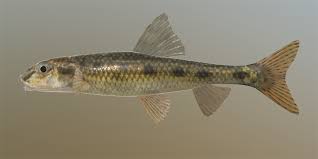
 extremely difficult, since it tried to evaluate, how the physiological status of a commercially important fish species in natural environment is affected by food, water temperature and environmental pollution. It is noteworthy that we were able to show that factors affecting the oxidative status of the fish affected the fitness and seawater survival of the salmon. It was also possible to show that increased toxicant load, elevated temperature and cyanobacterial blooms already in the present Baltic Sea induce changes, which are measurable with physiological parameters, and are likely to affect recruitment of salmon.
extremely difficult, since it tried to evaluate, how the physiological status of a commercially important fish species in natural environment is affected by food, water temperature and environmental pollution. It is noteworthy that we were able to show that factors affecting the oxidative status of the fish affected the fitness and seawater survival of the salmon. It was also possible to show that increased toxicant load, elevated temperature and cyanobacterial blooms already in the present Baltic Sea induce changes, which are measurable with physiological parameters, and are likely to affect recruitment of salmon.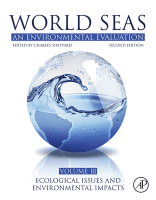 s and to evaluate the future of the seas. It would be impossible to give a comprehensive review of the book’s contents, so I take one environmental problem, hypoxia, in one sea area, the Baltic Sea as an example.
s and to evaluate the future of the seas. It would be impossible to give a comprehensive review of the book’s contents, so I take one environmental problem, hypoxia, in one sea area, the Baltic Sea as an example.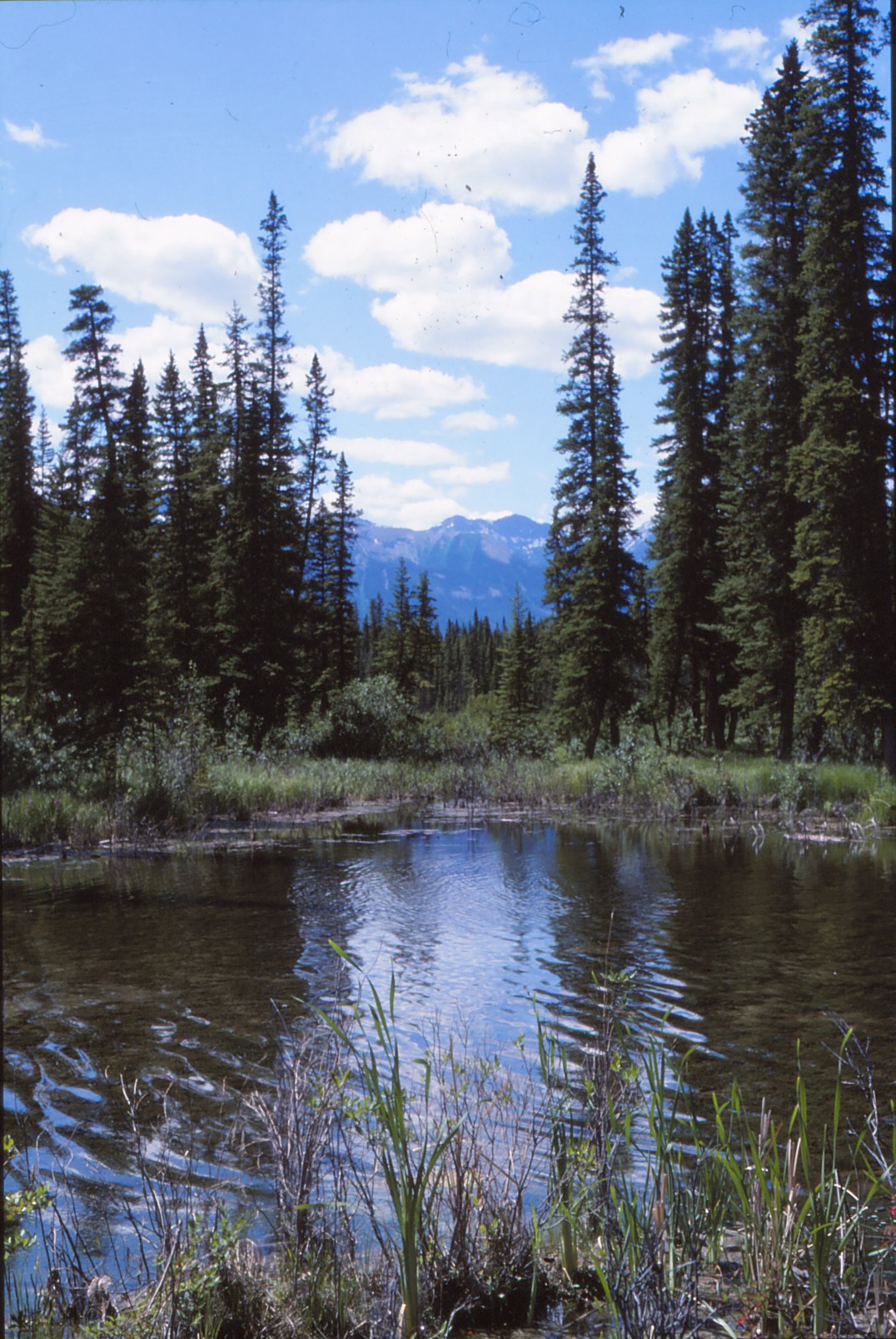 approach is doomed to fail. A common claim by populist is that: “We do what is required, but those others don’t.” And in the case of small countries like Finland, Sweden and Norway that: “Our contribution to global contamination is so small that even if we stopped all our emissions, it would change the global emissions much below 1 %.” Again, the statement that European industry is cleaner than, e.g., Indian, is true, but the populist buys Indian products, because they are much cheaper than the products made in European countries. Thus, if the populist nationalist was consequent, he would spend money to make the environmental standards of factories in Asia to conform to European standards or require that production, which has been moved away, is brought back, and thereafter only buy the domestic, more expensive products. Since neither is likely to happen, populistic nationalist fails gravely in climate issues. Notably, adopting children from poor areas would be both a climate deed and an action decreasing global inequality while increasing the number of people in countries with low reproduction rate.
approach is doomed to fail. A common claim by populist is that: “We do what is required, but those others don’t.” And in the case of small countries like Finland, Sweden and Norway that: “Our contribution to global contamination is so small that even if we stopped all our emissions, it would change the global emissions much below 1 %.” Again, the statement that European industry is cleaner than, e.g., Indian, is true, but the populist buys Indian products, because they are much cheaper than the products made in European countries. Thus, if the populist nationalist was consequent, he would spend money to make the environmental standards of factories in Asia to conform to European standards or require that production, which has been moved away, is brought back, and thereafter only buy the domestic, more expensive products. Since neither is likely to happen, populistic nationalist fails gravely in climate issues. Notably, adopting children from poor areas would be both a climate deed and an action decreasing global inequality while increasing the number of people in countries with low reproduction rate.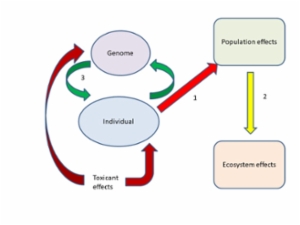 nmental biology and toxicology, and evolutionary biology as compared to ecology and genetics. My ecologist and geneticist friends always disagree with this, and give the following arguments. The ecologist says that many of the effects are indirect, which thus shows that only ecological studies can explain the effects. However, the effect may be indirect to the species (or group) one is studying, but there must be a functional effect on some organism in the ecosystem. If there weren’t, there would be no change. The geneticist and evolutionary biologist says that only the genetic changes will be transmitted to future generations. Thus, if an environmental change has an effect in the genome, that will be the important effect. While it is true that only genetically coded effect will be transmitted over many generations, a genetic change will only manifest itself if it affects the functions of organism in such a way that fitness (i.e. the number of offspring reaching sexual maturity) is affected. If the genetic change does not affect any functions, it is neutral both from the environmental and evolutionary viewpoint.
nmental biology and toxicology, and evolutionary biology as compared to ecology and genetics. My ecologist and geneticist friends always disagree with this, and give the following arguments. The ecologist says that many of the effects are indirect, which thus shows that only ecological studies can explain the effects. However, the effect may be indirect to the species (or group) one is studying, but there must be a functional effect on some organism in the ecosystem. If there weren’t, there would be no change. The geneticist and evolutionary biologist says that only the genetic changes will be transmitted to future generations. Thus, if an environmental change has an effect in the genome, that will be the important effect. While it is true that only genetically coded effect will be transmitted over many generations, a genetic change will only manifest itself if it affects the functions of organism in such a way that fitness (i.e. the number of offspring reaching sexual maturity) is affected. If the genetic change does not affect any functions, it is neutral both from the environmental and evolutionary viewpoint.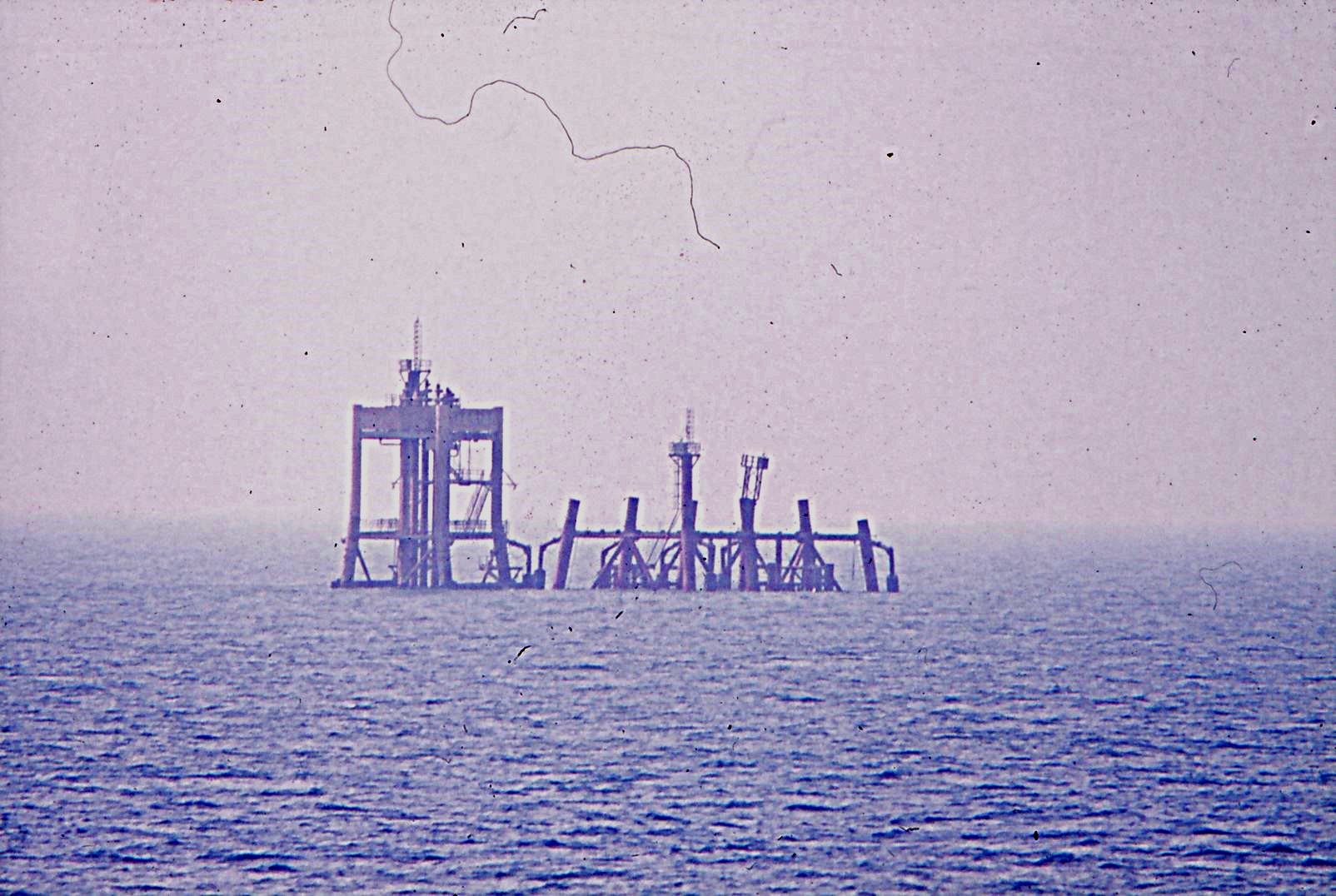
 Food security, water scarcity, rapid urbanization, mass migration, environmental pollution, biodiversity loss, and societal inequalities are all intricately woven into the tapestry of environmental change. These are wicked problems, intertwined and related to societal, economic, political, and behavioral dynamics and not simply physical systems.”
Food security, water scarcity, rapid urbanization, mass migration, environmental pollution, biodiversity loss, and societal inequalities are all intricately woven into the tapestry of environmental change. These are wicked problems, intertwined and related to societal, economic, political, and behavioral dynamics and not simply physical systems.” ws is that there are technological and societal solutions for stopping climate change without a need for drastic changes in everyday life – it only needs some adjustments. The worrisome problem is that there appears no sign of change in attitudes of economic leaders. In the recent report of World Economic Forum environmental questions were not even mentioned as factors to be taken into account, when considering economic development.
ws is that there are technological and societal solutions for stopping climate change without a need for drastic changes in everyday life – it only needs some adjustments. The worrisome problem is that there appears no sign of change in attitudes of economic leaders. In the recent report of World Economic Forum environmental questions were not even mentioned as factors to be taken into account, when considering economic development.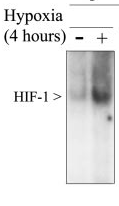 ersatile than that of mammals. We have studied the oxygen sensing and hypoxia-inducible factor (HIF) system, i.e. the phenomena now awarded Nobel Prize, since the late 1990’s. First, we observed that hypoxia-inducible factor was present in cells already in normal venous oxygen tension, although it increased in hypoxia (in humans and laboratory rodents it is only found in hypoxic conditions). Second, we observed that although the hypoxia-inducible factor level was controlled posttranscriptionally, also gene transcription could be modified. The HIF transcription depended on the number of hypoxic bouts experienced by the animal (in humans the control of HIF level occurs posttranscriptionally). Finally, we observed that HIF level was affected by temperature (something that is irrelevant for us homeotherms). These facts, together with the observations of interactions between HIF and circadian rhythms and environmental pollutants show that the system given the Nobel Prize for is more versatile in poikilothermic water breathers than humans.
ersatile than that of mammals. We have studied the oxygen sensing and hypoxia-inducible factor (HIF) system, i.e. the phenomena now awarded Nobel Prize, since the late 1990’s. First, we observed that hypoxia-inducible factor was present in cells already in normal venous oxygen tension, although it increased in hypoxia (in humans and laboratory rodents it is only found in hypoxic conditions). Second, we observed that although the hypoxia-inducible factor level was controlled posttranscriptionally, also gene transcription could be modified. The HIF transcription depended on the number of hypoxic bouts experienced by the animal (in humans the control of HIF level occurs posttranscriptionally). Finally, we observed that HIF level was affected by temperature (something that is irrelevant for us homeotherms). These facts, together with the observations of interactions between HIF and circadian rhythms and environmental pollutants show that the system given the Nobel Prize for is more versatile in poikilothermic water breathers than humans.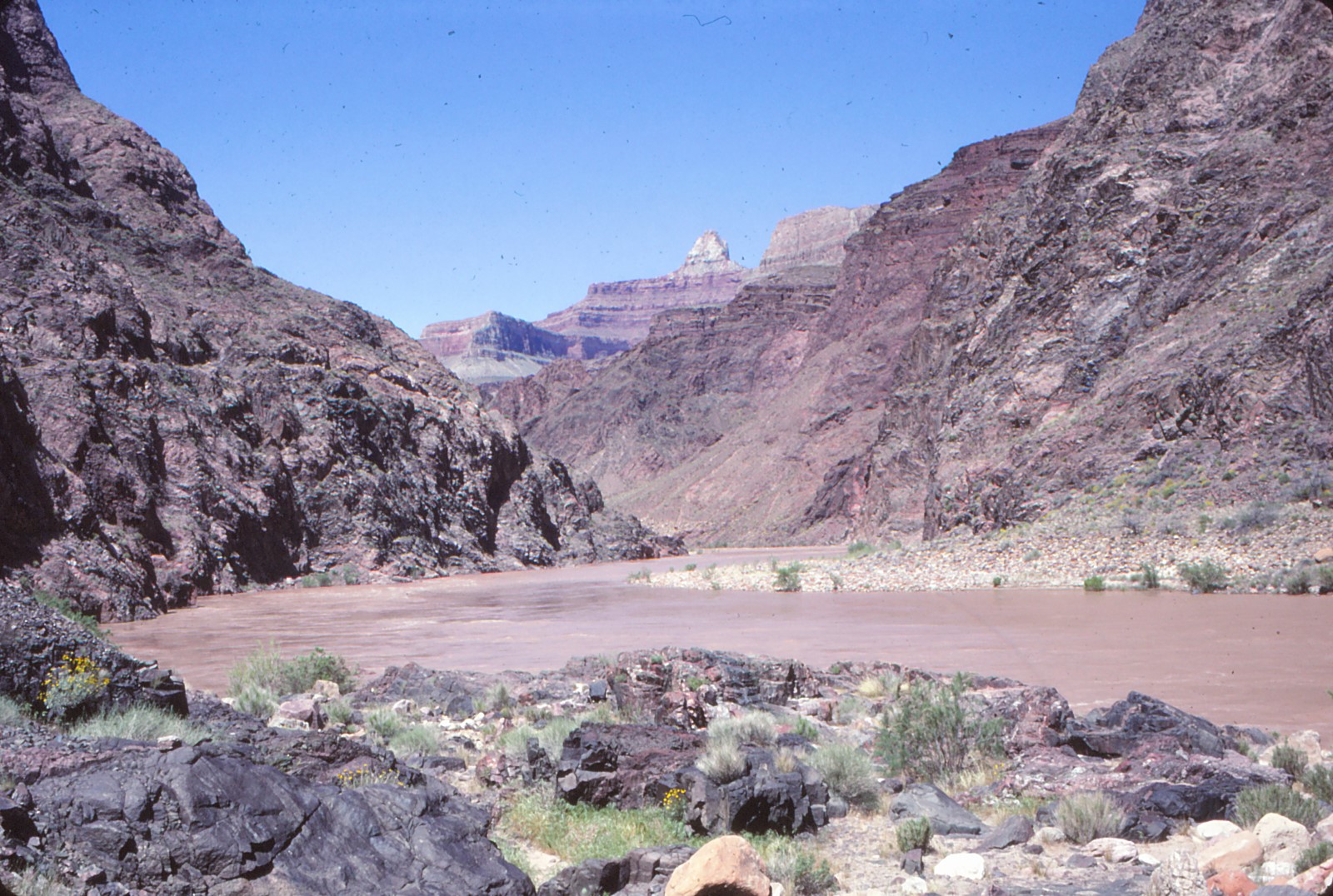 evade the tax by, e.g., investing in stock market. Further, since the tax would be global, companies could not evade it by transferring operations to low-tax nations. A question, which also has to be solved is how different nations would pay the global tax, since their involvement in the overall economy differs. The simplest solution, again taking into account the different wealth of nations, would be to have the contribution as gross national product divided by population. It would be imperative for nations to be required to contribute to the global tax fund, since they have very different roles in overall economy. Since a major environmental problem is that the world population has increased beyond what can be tolerated, the average number of children should somehow be taken into account. This could be done by including in the nation tax average number of children. The nation’s contribution would be increased, if the number of children exceeded the number calculated for a stable population. As no nation would be exempt from the nation-wide payment, this would ensure that the population contribution would be paid also by countries, where most of the inhabitants would be exempt from payment. GET would be collected by the United Nations: UN already has all the world’s nations included.
evade the tax by, e.g., investing in stock market. Further, since the tax would be global, companies could not evade it by transferring operations to low-tax nations. A question, which also has to be solved is how different nations would pay the global tax, since their involvement in the overall economy differs. The simplest solution, again taking into account the different wealth of nations, would be to have the contribution as gross national product divided by population. It would be imperative for nations to be required to contribute to the global tax fund, since they have very different roles in overall economy. Since a major environmental problem is that the world population has increased beyond what can be tolerated, the average number of children should somehow be taken into account. This could be done by including in the nation tax average number of children. The nation’s contribution would be increased, if the number of children exceeded the number calculated for a stable population. As no nation would be exempt from the nation-wide payment, this would ensure that the population contribution would be paid also by countries, where most of the inhabitants would be exempt from payment. GET would be collected by the United Nations: UN already has all the world’s nations included. etween organisms, the more likely it is that at least some specimens are able to tolerate the disturbed conditions. Hitherto it has been virtually always been thoght that the only important thing in this regard is genetic variability. However, individual variation is possible also without genetic variation: a single genotype can have quite different phenotypes, which tolerate different conditions.
etween organisms, the more likely it is that at least some specimens are able to tolerate the disturbed conditions. Hitherto it has been virtually always been thoght that the only important thing in this regard is genetic variability. However, individual variation is possible also without genetic variation: a single genotype can have quite different phenotypes, which tolerate different conditions.